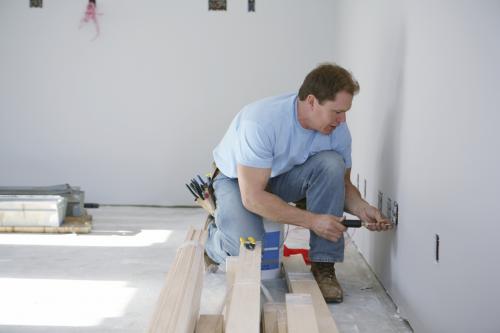
There are some significant differences in smart home design, depending on whether you’re building from scratch or making an existing home ‘smarter’. Find out more about these two different approaches.

How you design your smart home will depend very much on whether you’re building from scratch, or introducing smart home features and home automation systems into an existing home. While installing smart wiring throughout your home’s a breeze while it’s being built, doing so in an existing home can present some challenges, and may be fairly labour intensive. Likewise, if you’re installing after your home’s being built, you won’t have the luxury of being able to build around the central features you want included in your home, and will need to work within the limitations of the design you already have.
New build
The biggest advantage of adding technology at the design stage is that you can accommodate both wiring and unconventional design elements in from the beginning. For example, you can add all the wiring you need for audio, video and lighting while the walls are being built, removing the costly, time-consuming and inconvenient practice of ripping apart your walls at a later date. If you’re planning on mounting a retractable projector in the roof, you can also plan this in advance, and accommodate for both the projector and the mechanisms that will control it.
Bringing a custom installer in at such an early stage will allow them to collaborate with your architect, and use their knowledge to make sure rooms like your home theatre are built with acoustics in mind, and to the optimum dimensions for viewing. They will also ensure problematic items like windows and doors are placed in the right positions, and may also suggest that you include a dedicated climate controlled room with an AV rack to house all of your equipment.
Retrofit
If you have moved into a built home, retrofitting technology is still a feasible option and there are many solutions designed to work around virtually every constraint you come across, so you can still benefit of all the ‘smarts’ of modern living.
One of the tougher issues you’ll have to deal with is cabling. For example, technology such as multi-room distributed audio involves routing cables through walls and ceilings to the various speakers around your home. To do this at a retrofit stage can be a major inconvenience.
You may find yourself having to clear your belongings out of the room while work is taking place. More importantly, installers may need to cut holes in your walls in order to fit the necessary cabling. This depends on the type of walls in your home, of course – if you have solid concrete walls, this might not even be an option.
There are ways around most problems you may come across though. For example, to deal with cabling issues, you can still place wireless speakers around the house, however the preferred option is normally to run wires, both for the sake of reliability and to help future proof your system.
You can also use products that allow you to send all your AV sources around your home via a single Cat5 cable – many recently built homes will already have Cat5 outlets in every room, making this an easy, affordable option.
If you are at the design stage but you’re not exactly sure what technology you want to include in your new smart home, consider having smart wiring installed to cover all bases and future-proof your home.





